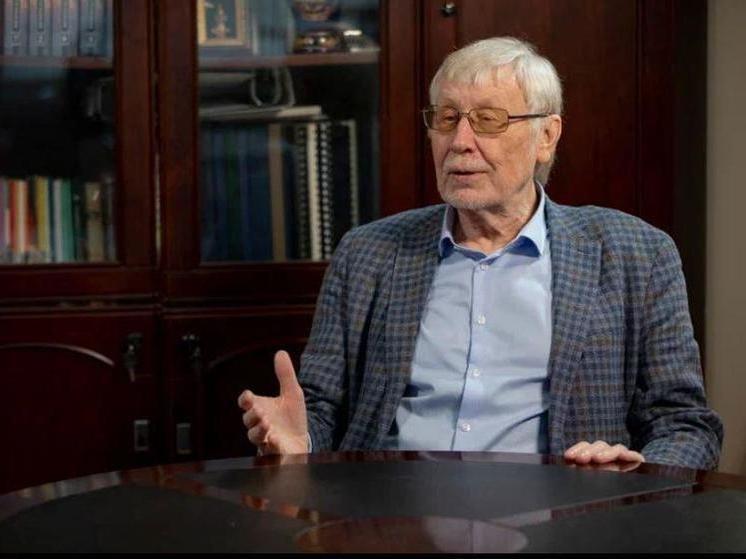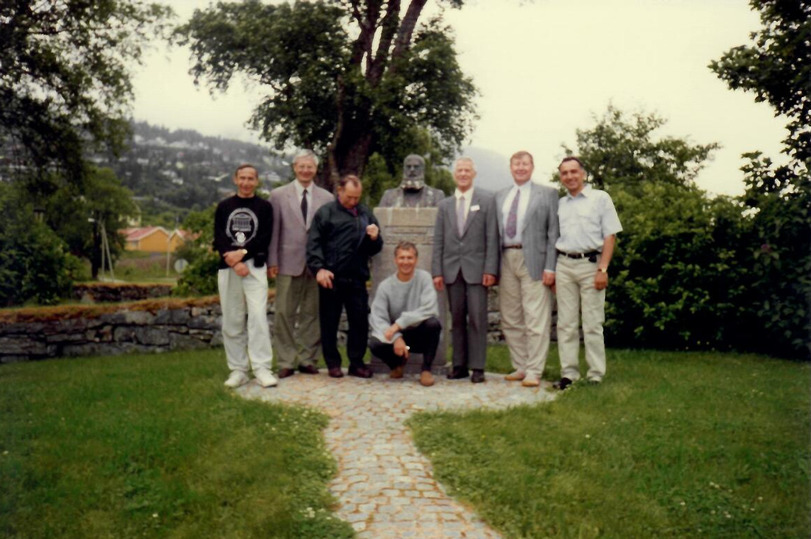The winner of the Swiss scientific publishing award spoke about the current level of the queen of sciences in the world
The head of the Department of Applied Mathematics of the Institute became the winner of the prestigious competition in mathematics, announced by the Swiss publishing house of open access scientific journals MDPI LaPlaz of the MEPhI Nuclear Research University Nikolay KUDRYASHOV. In modern political realities, the recognition of a Russian scientist in an international competition is worth a lot. We talked with the winner about why fundamental Russian science remains in demand all over the world, but often overlooked by Western awards, what is the state of higher education today, and how to «grow» a good mathematician.

It should be noted that the contest Mathematics 2021 Best Paper Award was held back in 2021, but the award, as they say, found its hero only in 2023, – the organizers have been counting the number of responses and citations for over a year. The winning paper is called Implicit Solitary Waves for One of the Generalized Nonlinear Schrödinger Equations.
— In the last few years, my scientific interests have shifted towards the theoretical study of nonlinear mathematical models with solutions in the form of solitons. Soliton – a very interesting object that has been intensively studied in recent decades all over the world. This is a solitary wave, resembling a particle in its behavior. It is interesting because in itself it can be a carrier of information. The attractiveness of this phenomenon lies in the fact that solitons propagate in a nonlinear medium without changing their shape and speed. Their only change may be a phase shift when interacting with other disturbances.
It turned out, and at the present time this is confirmed by numerous publications, that such phenomena occur in almost all areas studied by modern physics. In particular, they are used in optics when transmitting information over optical communication lines. My paper, published in 2021 in the journal Mathematics, considers a new mathematical model that can be thought of as a new type of optical solitons expressed in terms of implicit functions. It was reasonable to call such solitons implicit. The fact that the article was named the best of the entire list of articles of the year (and there were about 2000 of them), and received the first prize, was an unexpected event for me. I did nothing for this, I did not promote the article in any way, and I learned about this in April of this year from a letter from the editor of the journal.
Scientific work in general occupies one of the main places in my life, since During my school years, I liked solving mathematical problems: getting, even if not the most important and significant, but previously unknown results, is always interesting and exciting. The desire to learn something new has always been a powerful motivation for me.
– There is no doubt that the level and prestige of the domestic mathematical science is declining, by the way, like the level of other sciences. This seems to apply to the level of science throughout the world. Unfortunately even in the leading universities in recent years there are (fortunately, so far rarely) untrained students who are unable to understand the language of mathematics. There are a number of reasons for such a decrease, which can be discussed at length, this is a rather extensive topic. I can only say that the MEPhI of the 1960s and 70s of the last century was one of the best universities in the world, comparable only to Harvard, Oxford and Cambridge of that time. However, this fully applies to the Moscow Institute of Physics and Technology and Moscow State University. Now the situation looks much more modest.
In general, it must be said that Soviet fundamental science was one of the best in the world, and if the Nobel Prize had not been politicized, then there would have been much more of our laureates.  ;
Are there scientists like Kolmogorov today? Andrei Kolmogorov was a brilliant scientist of the 20th century, as was Leonard Euler – 18th century genius. It is difficult to name someone who could compare with them, and «big is seen from a distance.» I am sure that there are good mathematicians in Russia at the present time, including among young people – because fundamentality, as an important component of university mathematical education in Russia, is still preserved. The Soviet university mathematical education gave its graduates a high mathematical level, a high mathematical culture: they knew the connection between different branches of mathematics, possessed fundamental knowledge, methods and, as they say now, competencies. As a reviewer of many international journals, I constantly encounter the lack of this culture among so many foreign scientists. Today, many of them, for example, do not even understand such trifles that the hyperbolic tangent and cotangent, as solutions to differential equations – it's the same solution. They are also unaware of many other features of the theory of differential equations, for example, the fundamental concepts of existence and uniqueness. One of the reasons for this – substitution of formal computerization of a real mathematical culture based on knowledge of mathematics and its understanding. Fortunately, in modern Russia, it seems to me, we have not yet reached this point.
 With Russian and foreign colleagues at the monument to the Norwegian mathematician Sophus Lie in his homeland in Nordfjordeid. To the left of the monument is Lev Ovsyannikov, founder of the leading scientific school of group analysis of differential equations. Photo courtesy of N. Kudryashov
With Russian and foreign colleagues at the monument to the Norwegian mathematician Sophus Lie in his homeland in Nordfjordeid. To the left of the monument is Lev Ovsyannikov, founder of the leading scientific school of group analysis of differential equations. Photo courtesy of N. Kudryashov
– The question of the implementation of scientific results and their applied application – the question is not new. The percentage of world scientific research that is brought to implementation has always been low and does not exceed, according to my estimates, 3-4%. In Russia, it has probably always been even lower. Implementation depends on many factors: consumer interest, funding, the need for a particular development, etc. I will give a well-known example: the idea of a laser was expressed by several scientists back in the 1930s, but Nikolai Gennadievich Basov and Alexander Mikhailovich Prokhorov realized prototypes only twenty years later.
But the discovery of uranium fission led to the accelerated creation of atomic weapons, caused by the realities of World War II. It suffices to note that back in 1940, our remarkable physicist Pyotr Leonidovich Kapitsa (like many other outstanding scientists of that time, however) did not believe in the possibility of creating atomic weapons, because he very well understood the technological difficulties that had to be overcome for this. In short, many circumstances must coincide: the need for development, funding, the will and desire of management and a clear organization to create experimental and industrial developments based on the results of scientific research, and even then only those that can be implemented. There is knowledge that will probably never be embodied in scientific developments, but they still must be created, because without them there will be no further development of fundamental science. Is it possible to introduce mathematical analysis, integration or differentiation, methods for solving differential equations? But this – absolutely necessary elements of mathematical culture, extremely important and necessary in the creation of so many developments.
– I think that they really can leave many specialists without work, but I am sure that they are not competitors for mathematicians working in the field, for example, the development of new mathematical models, and in many other areas of mathematics. Still, the creative abilities of technology will always be lower than the capabilities of scientists and will be limited by the capabilities and knowledge that scientists have previously achieved.
 Nikolai Kudryashov in Paris on the square named after the great French mathematician Paul Painlevé, 2012. Photo courtesy of N. Kudryashov
Nikolai Kudryashov in Paris on the square named after the great French mathematician Paul Painlevé, 2012. Photo courtesy of N. Kudryashov
Let me give you an example. I was interested and still am interested in the application of neural network modeling methods for constructing optical solitons. Until a few months ago, I was hoping that something significantly new could be obtained compared to what is known. The methods really work, which has been demonstrated, including in our works. However, we got only what was obtained earlier, but by other methods. Fundamentally new results have not yet been obtained. It seems to me that this will continue to be the case. There is knowledge that is used and there is knowledge that is created, and these are two big differences. Mathematicians, like scientists in many other fields of science, have an excellent opportunity to create new knowledge.
Computers have already significantly helped to make a number of discoveries in mathematics and physics. It suffices to note that the discovery of solitons by M. Kruskal and N. Zabuski was made in 1965 during a computational experiment. But it was mathematicians who set the problem, proposed a method and algorithm for solving it, and forced computers to make this and many other discoveries. Something like this will always happen. Naturally, without the help of a computer, I would not have been able to do the complex calculations that are found in my works, including in the article that received the award, but still, in this work, the computer was only a participant in the project.
< p>
– Students, as well as graduate students, here, as elsewhere, – different. There are people with very good knowledge, there are people with average knowledge, and there are people with bad knowledge. On this occasion, I always say that the Maxwell distribution (probability distribution. —) has a general nature and no one can cancel it. In general, I believe that the level of student knowledge in mathematics is declining. In this regard once the director of the Steklov Mathematical Institute Academician Dmitry Valerievich Treshchev asked me if we had good students? I replied that there are usually one or two good students in each student group. He told me that at his department at Moscow State University. M.V. Lomonosov has the same picture, and added: “Probably, we are working for them.”
What is the most important thing here? First of all, motivation. What does the student put in first or second place? Science is to be loved. By the way, there are always excellent students who know for sure that they will not become scientists, but there are also good students who can be. Many circumstances influence the development of young people.
Very often one can observe that modern students are oriented towards acquiring simple skills, which, of course, is also necessary, but avoid developing their creative abilities. At the same time, they try to solve simple problems, avoiding complex ones, which undoubtedly require a lot of effort. Sometimes they mistakenly think that it is enough to formally master modern programming languages, without studying modern mathematics, and this will be quite enough for their further career trajectory. In fact, this is not the case – It is well known that the creator of cybernetics, Norbert Wiener, was first of all an outstanding mathematician.


